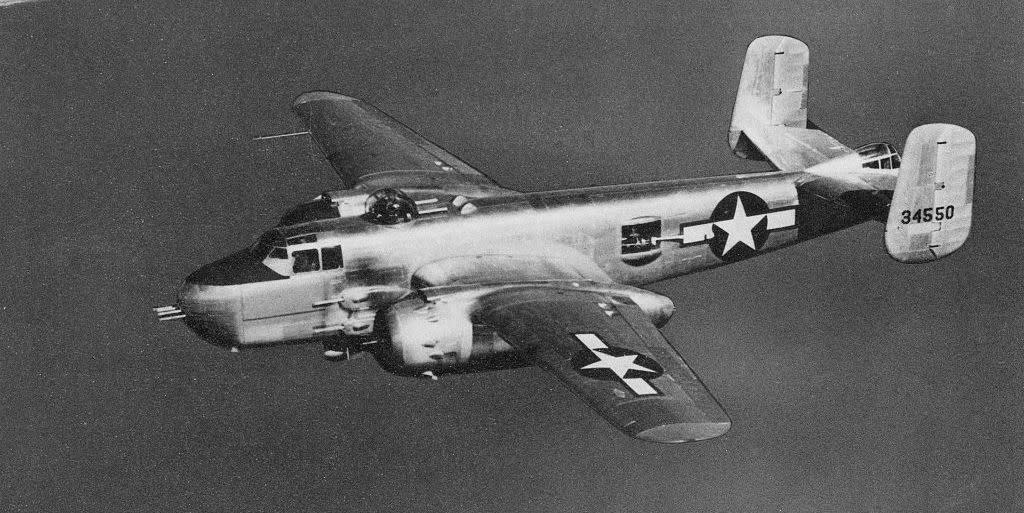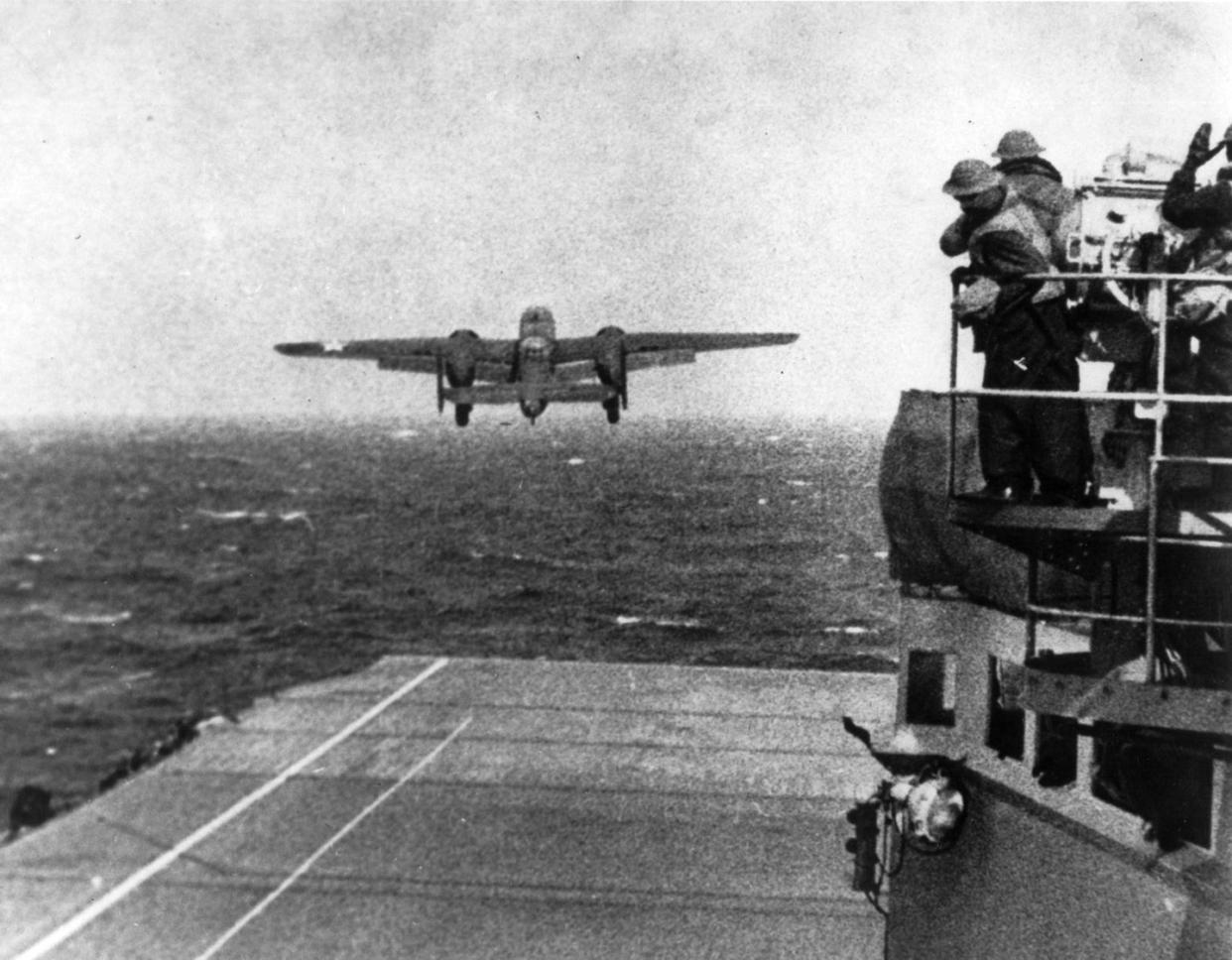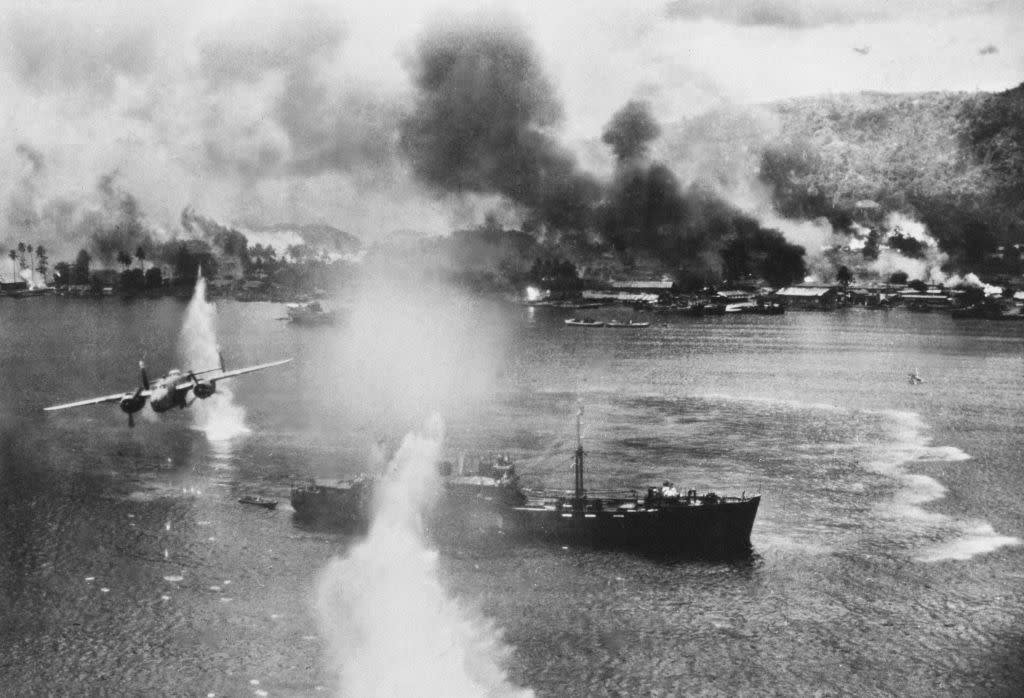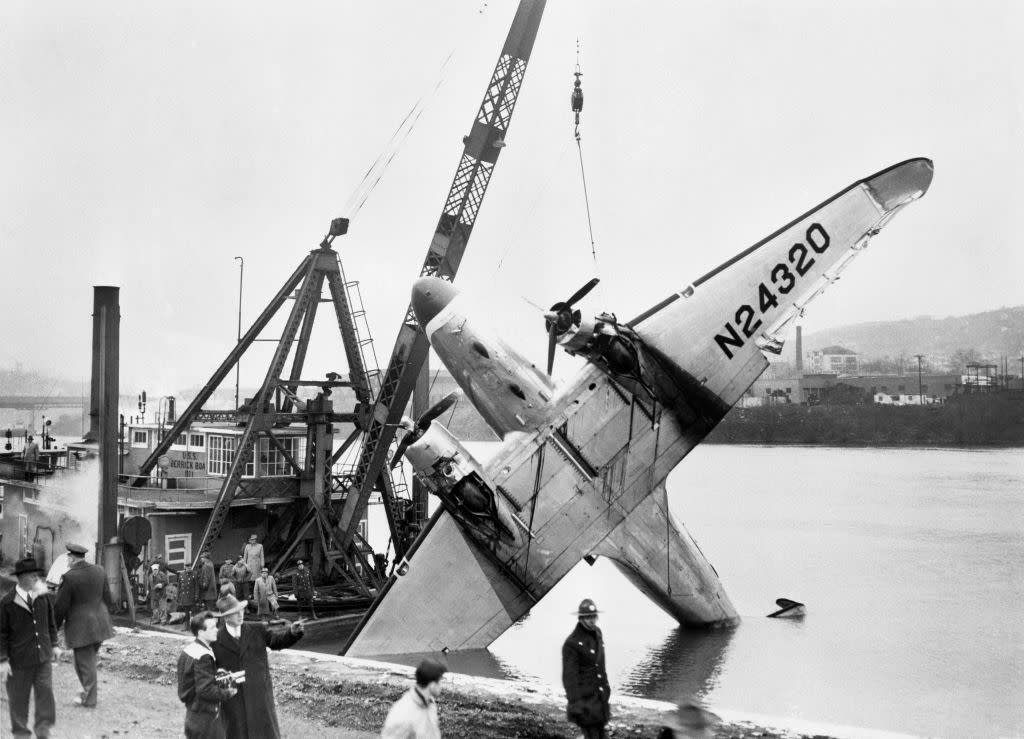66 Years Ago, a B-25 Bomber Mysteriously Vanished in a Pennsylvania River

In 1956, a B-25 bomber crash-landed in the Monongahela River in Pittsburgh, Pennsylvania.
Four crew members survived the crash, but the bomber mysteriously disappeared.
Ever since, the so-called “Ghost Bomber of the Monongahela” has been the subject of speculation and conspiracy theories.
More than 60 years ago, the Monongahela River pulled off a vanishing trick that sure makes Harry Houdini’s stunts look like child’s play. In January 1956, a U.S. Air Force B-25 bomber made an emergency landing in the river, which passes through Pittsburgh, Pennsylvania ... then promptly disappeared without a trace. Attempts to locate the plane—which was barely taller than the maximum depth of the river—have all failed, leading locals to call the plane the “Ghost Bomber of the Monongahela.”
✈ You love aviation history. So do we. Let’s nerd out over it together—join Pop Mech Pro.
When the TB-25 Mitchell aircraft took off from Nellis Air Force Base in Nevada, the crew consisted of three pilots: Maj. William Dotson, Capt. Steve W. Tabak, and Capt. John F. Jamieson. There were three others onboard the aircraft, including Staff Sgt. Walter E. Soocey, aircraft crew chief; and Capt. J.P. Ingraham and Master Sgt. Alfred J. Alleman, who were both listed as passengers.

The crew of the TB-25, a B-25 medium tactical bomber converted into a trainer aircraft, was ordered to fly cross-country to pick up aircraft parts at the former Olmstead Air Force Base near Harrisburg, Pennsylvania, and to drop off the two passengers onboard at Andrews Air Force Base in the Washington, D.C. area.
According to the preliminary accident report, the bomber flew from Nellis to Tinker Air Force Base in Oklahoma, where it refueled. It spent the night at Tinker before proceeding on to Selfridge Air Force Base in Michigan. Capt. Tabak disembarked, and the crew, after finding out it would take several hours to refuel, decided to fly on to Olmstead without refueling.
The decision to press on with the fuel left onboard proved tragic. Thirty-one nautical miles east of the Pittsburgh International Airport, the crew noticed an “obvious and unusual” decrease in the amount of fuel in the plane’s tanks. It diverted from Olmstead to civilian airports twice as the fuel situation worsened. The TB-25N, its tanks dry, lost both engines at an altitude of 3,000 feet above the Monongahela River. The pilot in command, Maj. Dotson, put the airplane down so skillfully that it landed intact and without any significant injuries among its passengers and crew.

The six airmen were able to assemble on the top of the aircraft as it floated downstream. They were freezing: the air temperature was just 27 degrees Fahrenheit, and the water temperature was 35 degrees Fahrenheit. The river was 800 to 1,000 feet wide, meaning any survivor was faced with a lengthy swim to shore, with the current running at a brisk eight to 10 knots. The plane remained afloat for 15 to 20 minutes before it began to sink, whereupon the airmen were forced into the water. Four made it to safety, rescued by civilian passersby and police, but two disappeared in the river.
Authorities searched for two weeks, but the plane and missing crew were never seen again. The day after the crash, the Coast Guard snagged what it thought was the plane’s wing three times, but the searching cutter was unable to raise the underwater object. An Army Corps of Engineers dredging barge swept the river 150 times and still came up empty-handed.
Over the next 66 years, the disappearance of the aircraft took on legendary proportions. It has even, in this age of craft breweries and distilleries, inspired its own gin. How, locals asked, could an airplane nearly 16 feet tall disappear in a river with a maximum depth of 35 feet?

The mystery has since spurred a slew of conspiracy theories. Some locals insisted they saw the U.S. military recover the airplane at night. Others, apparently believing a spare-parts run to be too mundane for the scope of the disaster, claimed the lost aircraft had been carrying atomic weapons, nerve gas, Mafia money, or even aliens. Still other rumors involved reclusive industrialist and aviator Howard Hughes, or Las Vegas showgirls bound for Andrews Air Force Base. Yet another claimed that seven men had been pulled from the river instead of four.
The Pentagon is no longer interested in locating the plane, since all of the crew members were verified exiting the TB-25, and there are no human remains to recover. That leaves the search up to the public. In the 1990s, a private organization called the B-25 Recovery Group set out to finally locate the missing bomber.

In 1999, group members theorized that the bomber was still in the Monongahela in an old gravel pit in the river. The B-25 Recovery Group believed the wreck was “buried approximately 150 feet off the left descending bank of the Mon, at mile point 4.9, at a place known to river men as Bird’s Landing.” This corresponds to roughly half a mile west of the Glenwood Highway Bridge. In 2008, a search with sensors and underwater cameras located what group members thought was a three-bladed propeller and propeller hub, but divers were unable to locate the alleged wreckage.
Unlike most “ghosts,” the Ghost Bomber of the Monongahela is based on a solid event—a tragic accident—and researchers believe they know exactly where the missing plane is. Finding it may just be a matter of securing the funding to further the search, which in this case means procuring a magnetometer and the boats to support scanning the river. If you want to help bring closure to one of Pennsylvania’s most enduring mysteries, the B-25 Recovery Group is still soliciting donations to help locate the missing plane.
You Might Also Like
